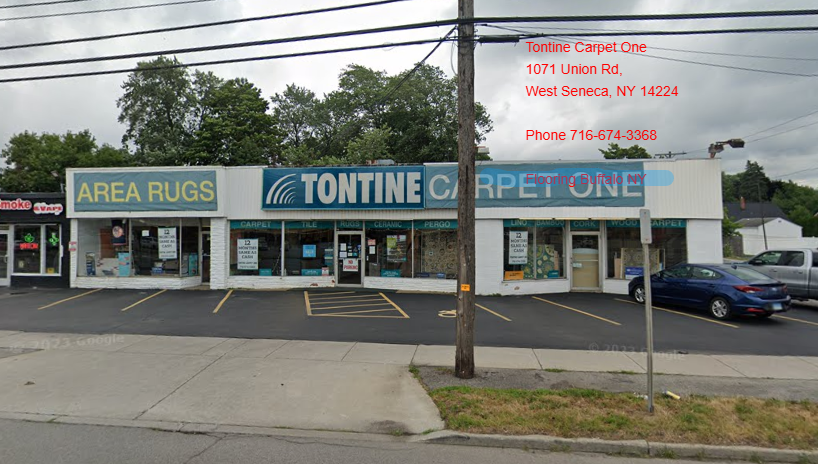Introduction
When we walk because of a fantastically embellished dwelling house, our eyes aas a rule fall upon the carpeting that serves as either a foundation and a observation piece. Carpets can elevate areas, proposing warmth, comfort, and an aesthetic charm. But have you ever questioned how carpet styles evolved through the years? From high priced Persian rugs to modern minimalist designs, the adventure of carpeting kinds reflects societal differences, technological improvements, and evolving tastes.
In this text, we’ll discover The Evolution of Carpeting Styles Over the Years in detail. We'll delve into historic context, fabrics used, layout tendencies, and modern techniques within the carpet market. Whether you're searching out carpets Buffalo NY, Hardwood Flooring Buffalo NY, or without problems exploring ideas at your neighborhood Buffalo Carpet Store, this article will give insights into how carpets have converted over time.

The Evolution of Carpeting Styles Over the Years
A Brief History of Carpeting
Carpeting has a rich history dating lower back enormous quantities of years. Initially created for realistic functions, carpets evolved into decorative artwork forms that pondered cultural values and improvements.
Early Beginnings: The Origin of Rugs
- Persian Influence: Persian rugs are one of the oldest frequent carpets, courting lower back to round 500 BC. Their tricky designs aas a rule characteristic floral motifs and geometric patterns. Navajo Weaving: In North America, Native American tribes just like the Navajo started out weaving their own precise rugs as early because the seventeenth century.
These early carpets were not merely practical yet also served as reputation symbols inside their respective cultures.
The Middle Ages: A Shift in Functionality
As societies advanced throughout the time of the Middle Ages, carpets transitioned from being basically utilitarian to serving as decorative features in castles and church buildings across Europe. The use of prosperous colorings and elaborate designs grew to be trendy.
Renaissance to Industrial Revolution: The Rise of Luxury Carpets
Renaissance Flourishes
During the Renaissance era (14th to seventeenth centuries), European royalty commissioned great tapestries and carpets for his or her houses. These textiles featured vivid colours and depicted scenes from mythology or nature.
Industrial Innovations
The Industrial Revolution in the 18th century marked a immense turning element for carpeting patterns:
- Mass Production: With advancements in equipment, carpets might be produced on a larger scale. Synthetic Fibers: The introduction of man made fibers introduced toughness at cut back expenses.
20th Century: Diverse Styles Emerge
As we entered the 20th century, carpeting started to diversify added:
Mid-Century Modern Designs
The mid-century cutting-edge circulate emphasised simplicity and function. Carpets corresponding to shag rugs become general as a result of their textural features.
Post-War Era Trends
After World War II, there has been a surge in suburban dwelling which encouraged carpet layout:

- Wall-to-wall carpeting become a staple in lots of properties. Bright colors like avocado inexperienced and mustard yellow pondered time-honored way of life throughout this era.
Contemporary Trends: Sustainable Practices and Technology
Today’s carpets reflect contemporary subculture selections with an emphasis on sustainability and technologies:
Eco-Friendly Materials
Many buyers at the moment are in search of sustainable treatments made out of recycled resources or natural and organic fibers. This shift is obvious at regional ground retail outlets like Tontine Carpet One Buffalo NY.
Technological Advancements
Innovations resembling stain-resistant healing procedures and multiplied install tactics have made keeping carpets less complicated than ever earlier.
Materials Used in Carpet Making Through Time
Natural vs Synthetic Fibers: A Comparative Analysis
When discussing carpet elements through the years, it’s fundamental to reflect on both herbal and man made fibers:
| Material Type | Characteristics | Advantages | Disadvantages | |-------------------|-----------------------------------------------------|-----------------------------------------|-------------------------------------| | Natural Fibers | Wool, cotton, jute | Eco-friendly; luxurious suppose | Can be highly-priced | | Synthetic Fibers | Nylon, polyester | Durable; stain-resistant | Less breathable |
Wool: The Classic Choice
Wool has been respected for its durability and luxury texture during background. It retains warm temperature effectively and is clearly resistant to dust.
Nylon: A Modern Marvel
Introduced in the mid-twentieth century, nylon speedy turned common due to the its resilience opposed to wear and tear—suitable for prime-site https://penzu.com/p/e1d8fbf81d8d7f66 visitors components like hallways or dwelling rooms.
Design Trends Across Different Eras
Victorian Patterns: Opulence Redefined
In Victorian instances (nineteenth century), ornate patterns dominated carpet designs with floral motifs reflecting wealth.
Art Deco Inspirations
Art Deco (Twenties) delivered geometric shapes into recognition—imparting bold contrasts that also resonate as we speak.
Influence of Culture on Carpet Design
Cultural Significance
Every way of life has its targeted contribution to carpet making—from Persian motifs celebrating nature to Navajo patterns reflecting storytelling.
Regional Styles
Each neighborhood showcases distinct features centered on obtainable ingredients or average procedures—feel Turkish kilims as opposed to Indian dhurries!
FAQs
1. What are some known forms of carpeting?
There are diverse versions together with loop pile, lower pile (like plush), frieze (twisted), Berber (looped & textured). Each bargains distinctive aesthetics & alleviation stages!
2. How do I want a carpet dependent on life-style?
Consider aspects along with foot visitors ranges! For busy households with pets/teenagers pick sturdy suggestions like nylon or Berber kinds that face up to stains!
3. Are eco-friendly carpets valued at it?
Absolutely! They no longer handiest contribute in opposition to sustainability however may also present higher air satisfactory benefits! Many eco-friendly brands now have dependent services too!
four. How repeatedly could I replace my carpet?
Typically every five-10 years based on usage & protection! Regular cleansing can make bigger its lifestyles particularly!
5. What’s trending accurate now in carpeting styles?
Current developments emphasize textures—imagine shaggy appears to be like paired with neutral colorings! Also multi-practical discipline rugs are incredibly favorite!
6. Can I deploy carpet myself?
While DIY installing is manageable chiefly with modular tiles; official setting up guarantees perfect outcome extraordinarily for wall-to-wall fittings!

Conclusion
As we reflect on The Evolution of Carpeting Styles Over the Years, that is clean that these humble textiles tell memories some distance past aesthetics—they encapsulate cultural identities whereas adapting with time's currents! Whether you’re touring your native Buffalo Carpet Store or determining among possibilities at Tontine Carpet One Buffalo NY; realizing this evolution complements appreciation for your decisions as we speak!
From pure fibers steeped in subculture to modern man made techniques; our reference to floors is still profound! So subsequent time you stroll throughout your plush dwelling room carpet keep in mind that—it’s greater than just fabrics underfoot—it’s historical past woven into each and every thread!